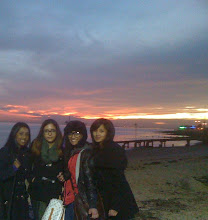Institutional Context & Professional Practice
Most often, a record label is a company that brands, trademarks and markets music recordings and videos. It also co-ordinates the production, manufacture, distribution, promotion and copyright protection of these music products. Some larger labels conduct talent scouting and development of new artists (“artists and repertoire”/A&R) as well as maintain contracts with artists and their managers.
Recording artists usually rely on record labels to promote their music through radio, television and to market and distribute their products to stores and other media outlets; all to further broaden the artist’s audience. In recent years, however, the internet has increasingly become a way for artists to directly distribute and promote their products while avoiding costs.
Record labels range between small, localised “independent/indie” to large international media groups. The four largest labels are called the Major Labels. A sub-label is a label part of a bigger company which trades under a different name. Some labels are not a company, but only a trademark or brand. These are referred to as imprints.
Major Labels
1. Sony Music Entertainment (SME)
2. Electric & Musical Industries Ltd (EMI)
3. Warner Music Group (WMG)
4. Universal Music Group (UMG)
Most record labels are controlled by a corporate umbrella organization called “Music Group”. Music groups are typically owned by an international conglomerate holding company, which usually have non-music divisions as well. As of 2005, “Big Four” music groups control approximately 70% of the world music market and about 80% of the US music market. Record companies (i.e. Music Publishing Companies, Record/Sound Recording Manufacturers, Record Distributors and Record Labels) can also make up a “Record Group”, which in turn is controlled by a music group.
Artists “signed” or under contract with these labels are more likely to be successful due to the contacts and facilities at the major label’s disposal, however there is a cost. Their contracts are a lot more controlling and constricting as compared to smaller indie labels. Major labels focus on the aspect of making record sales and usually consider artists as mere commodities.
Independent
Record companies not under the big four are generally considered as independent/indie, no matter the size or complexity. They are usually started by an artist or band putting out their own material using smaller-scale methods of marketing and promotion, such as handing out CDs at performances, posting fliers around the locality or internet. Benefits for indie labels;
1. Income- Income from concert ticket purchase and sales of promotional merchandise are spread between less people.
2. Step to Major Deal- Indie labels can be used as a platform for attaining bigger deals. Indie artists and labels can sometimes be signed to major labels. Major labels now pay more attention to genres which were previously practiced underground i.e. Hip-Hop and Latin.
3. Artist Control- Indie artists retain control and profit from their own careers without total submission to a superior.
4. Strengthen Local Economy- Since indie labels start of locally, equipment and employees are also acquired locally. As they become more successful and expand outside their regional borders, they import money. Therefore, indie labels indirectly help they community’s economic base.
Problems for Indies
Although the success of indie labels is much more rewarding, there are many barriers to the achievement of this.
1. Advertisement Competition- Adverts are dominated by entertainment and leisure products from business giants. Indie products have difficulty competing for attention.
2. Access to Popular Media- The conglomerates which control music groups also control television networks, radio stations, magazines, publishing companies and popular websites. Because of this, most music and videos that reach the masses are owned by the conglomerates.
3. Retail Store Consolidation- Retail stores are increasingly becoming owned by larger companies, as opposed to previous privately owned stores which make it more difficult for indie labels to have their products sold by them. Also, the larger music groups buy out entire shop floors, racks and bins for their artists at a time, making each individual slot more expensive and scarce which makes it even more difficult for indie labels to acquire a slot.
The Internet
The internet is increasingly becoming more and more helpful to indie artist, label and major label interests alike. It serves as an ideal medium for advertising and promotion as well as becoming a solution for the increasing consolidation prices of retail outlets. Although this can be seen as a ray of hope for indie artist breakthrough, there are still some pitfalls.
The internet, as vast as it is, still has dominant sites owned by conglomerates which provide audiences with their own material. Indie artists that promote and distribute their own material, therefore, become so common that it is easy for them to become insignificant.
The upside for the indie labels, however, is that although major labels focus on the genres they expect to sell, indie artists can continue to satisfy the wants of the less mainstream listeners with passion, diversity, vitality and creativity.
UK Television Music Stations
Owner/ Station
Viacom/ MTV, MTV2, MTV Base, MTV Dance, MTV HITS, VH1, VH1 Classic, VH2, TMF.EMAP/ KISS, Q, Kerrang!, Smash Hits, The Hits, Magic.
BSKYB/ Scuzz, Bliss, Flaunt.
Chart Show Channels/ The Vault, Chart Show TV, Bliss
Video Interactive TV/ Channel AKA
GWR/ Classic FM
Zee TV/ Zee Music
Station/ Genre or Target audience
VH1/ Rock and Pop- for 24-44 year-olds
Q/ Rock- Designed for people who read the magazine Q.
Scuzz/ Hardcore Rock
Channel AKA/ Urban (Hip-Hop, Garage, Grime etc)-Underground
Flaunt/ Pop and R&B- Feminine
Box/ Across the Board
MTV Base/ Urban- Commercial
Classic FM/ Classical
Kerrang!/ Heavy Rock
Smash Hits/ Pop
MTV/ Hits from all genres
Subscribe to:
Post Comments (Atom)


No comments:
Post a Comment